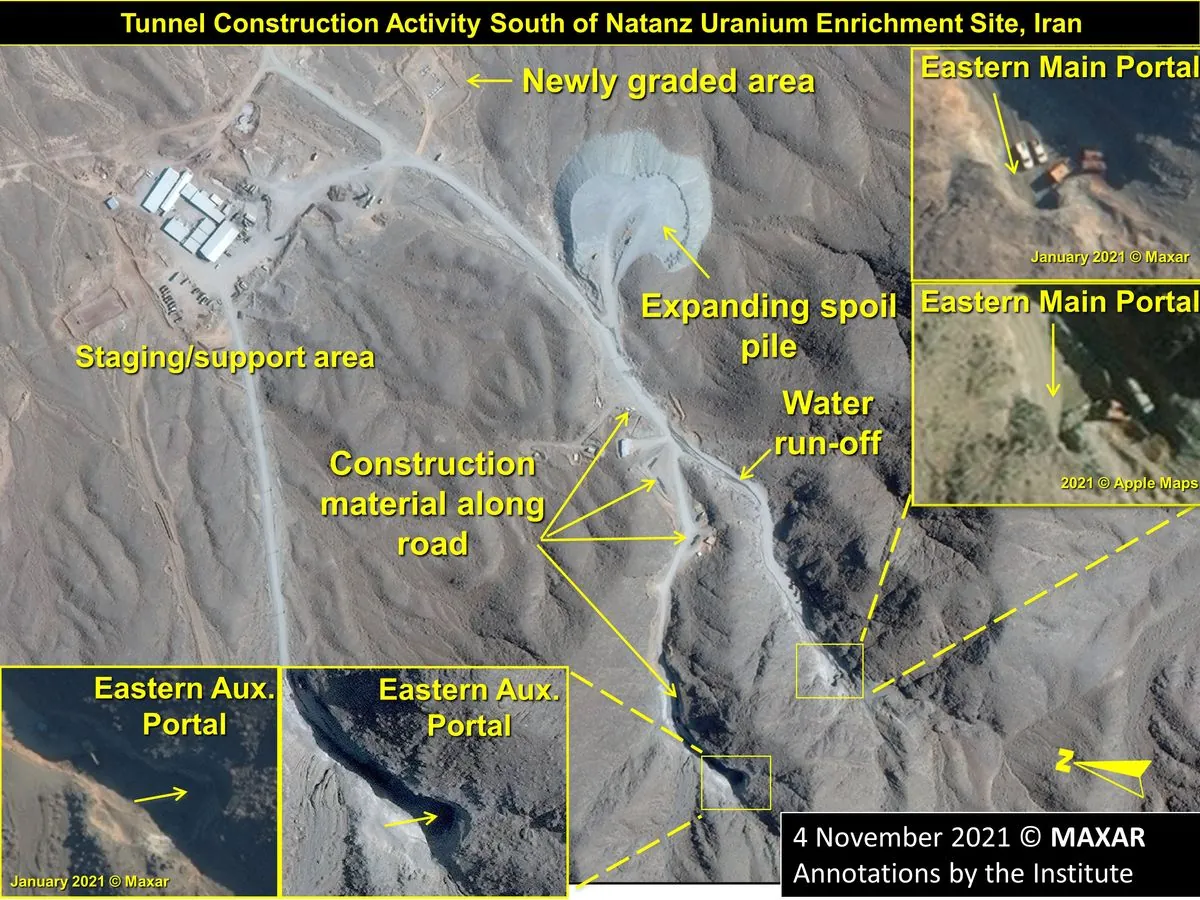Iran's Nuclear Facilities: A Comprehensive Overview
Explore Iran's key nuclear sites amid rising tensions. From Natanz to Fordow, this article examines the facilities at the heart of Iran's controversial uranium enrichment program and international concerns.

In light of recent events, attention has turned to Iran's nuclear facilities, which have long been a source of international concern. This article provides an in-depth look at the key sites involved in Iran's nuclear program and the ongoing debate surrounding their purposes.
Iran's nuclear ambitions date back to the 1950s, when the country began its program under the U.S. Atoms for Peace initiative. Since then, the Islamic Republic has developed a complex network of facilities spread across the nation, some of which are built underground to protect against potential airstrikes.
The cornerstone of Iran's nuclear program is its uranium enrichment capabilities. The country has been expanding these efforts since 2019, following the collapse of the 2015 nuclear deal. This expansion has significantly reduced the time required to produce enough weapons-grade uranium for a nuclear device, a period known as "breakout time."

Currently, Iran is enriching uranium to levels approaching 60% fissile purity at two locations. This is alarmingly close to the 90% required for weapons-grade material. According to the International Atomic Energy Agency (IAEA), Iran theoretically possesses enough enriched material for almost four nuclear bombs if further refined.
The Natanz complex, located near the city of Qom, houses two primary enrichment facilities: the underground Fuel Enrichment Plant (FEP) and the above-ground Pilot Fuel Enrichment Plant (PFEP). The FEP, capable of accommodating 50,000 centrifuges, currently operates about 11,000 centrifuges, enriching uranium to 5% purity. The PFEP, though smaller, is where Iran conducts its higher-level enrichment activities, reaching up to 60% purity.
Another crucial site is the Fordow facility, which is built into a mountain for added protection. Originally not permitted to enrich uranium under the 2015 deal, Fordow now operates over 1,000 centrifuges, including advanced IR-6 machines capable of enriching to 60% purity.
Iran's nuclear technology center in Isfahan is home to facilities for uranium conversion and fuel plate fabrication. The site also houses equipment for producing uranium metal, a process that raises proliferation concerns due to its potential use in nuclear weapon cores.
The Khondab reactor, formerly known as Arak, is a partially constructed heavy-water research reactor. Under the 2015 agreement, its core was filled with concrete to render it unusable. However, Iran has informed the IAEA of plans to bring the reactor online by 2026.
"The IAEA continues to verify and monitor Iran's nuclear-related commitments under the JCPOA. However, our ability to do so has been significantly hampered."
It's worth noting that Iran ratified the Nuclear Non-Proliferation Treaty in 1970 and has consistently maintained that its nuclear program is for peaceful purposes, including medical isotope production and energy generation. The country's only operating nuclear power plant in Bushehr uses Russian fuel, which is returned to Russia after use, reducing proliferation risks.
The international community remains divided on the true nature of Iran's nuclear ambitions. While the country has cooperated with IAEA inspections, conducting over 3,000 person-days of inspections since 2003, concerns persist about potential military dimensions of the program.
As tensions in the region escalate, the future of Iran's nuclear facilities and the global response to their development remain uncertain. The coming months will likely see increased diplomatic efforts to address these concerns and prevent further escalation.


































